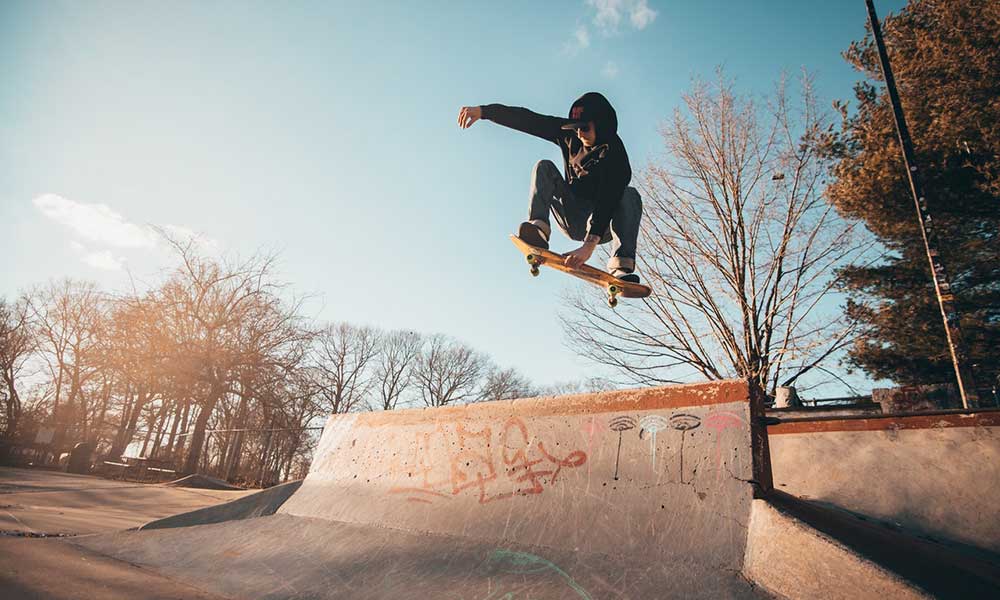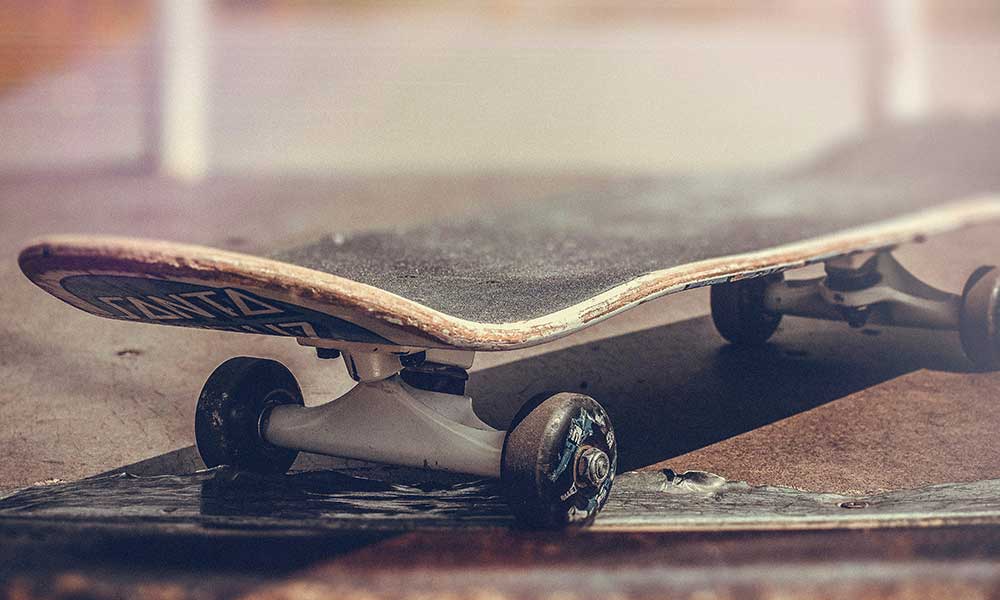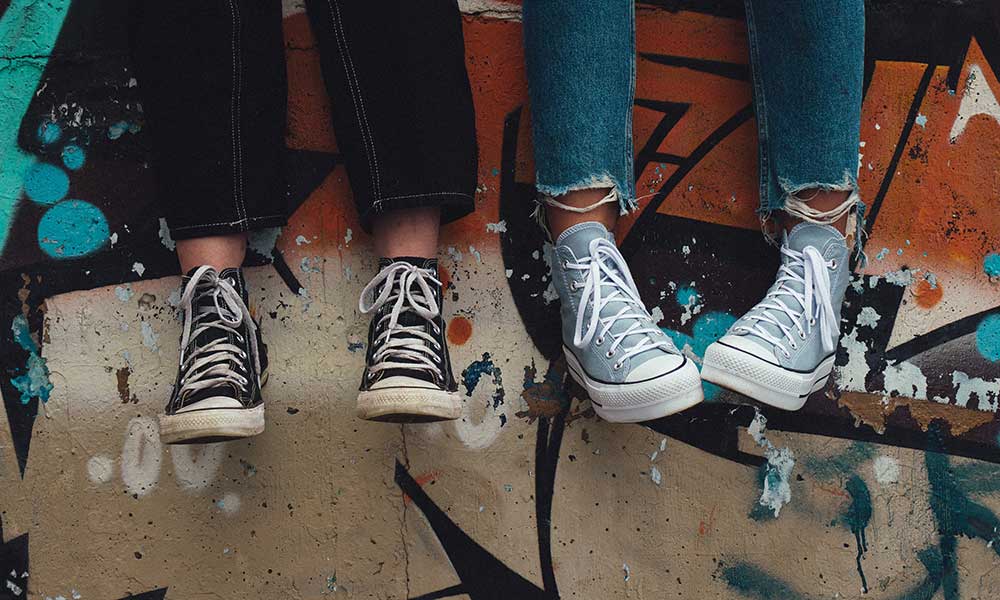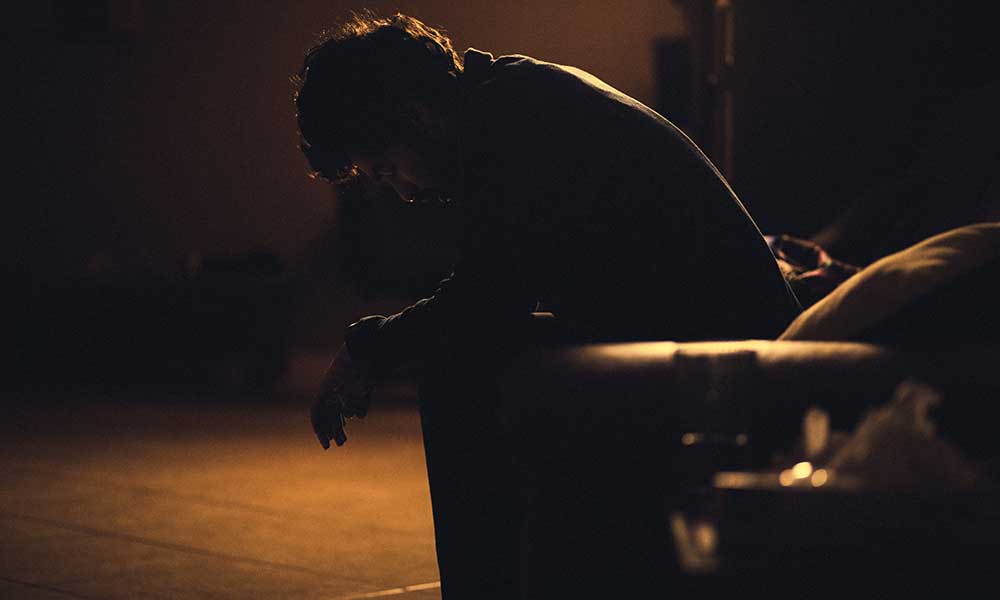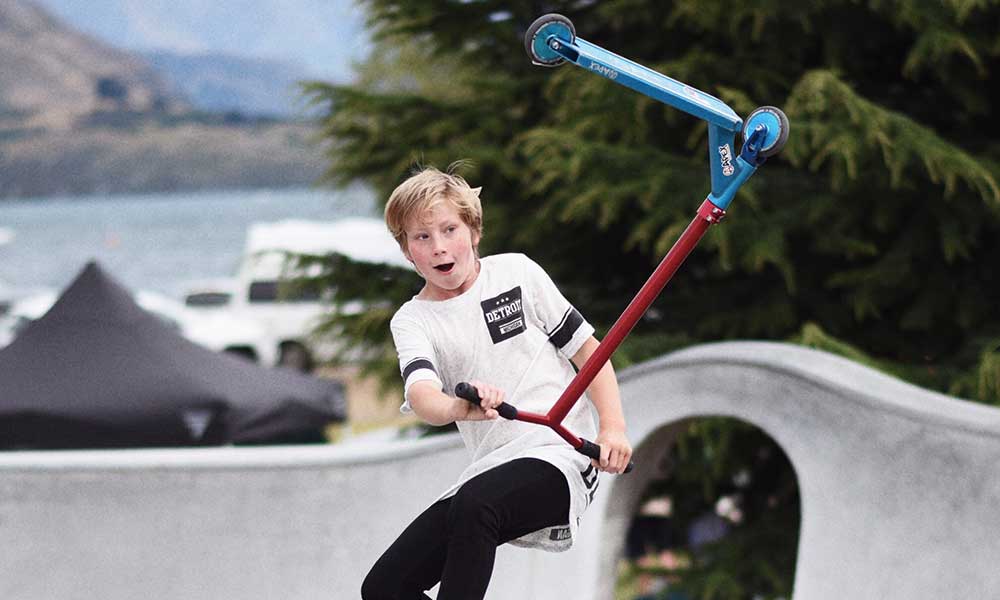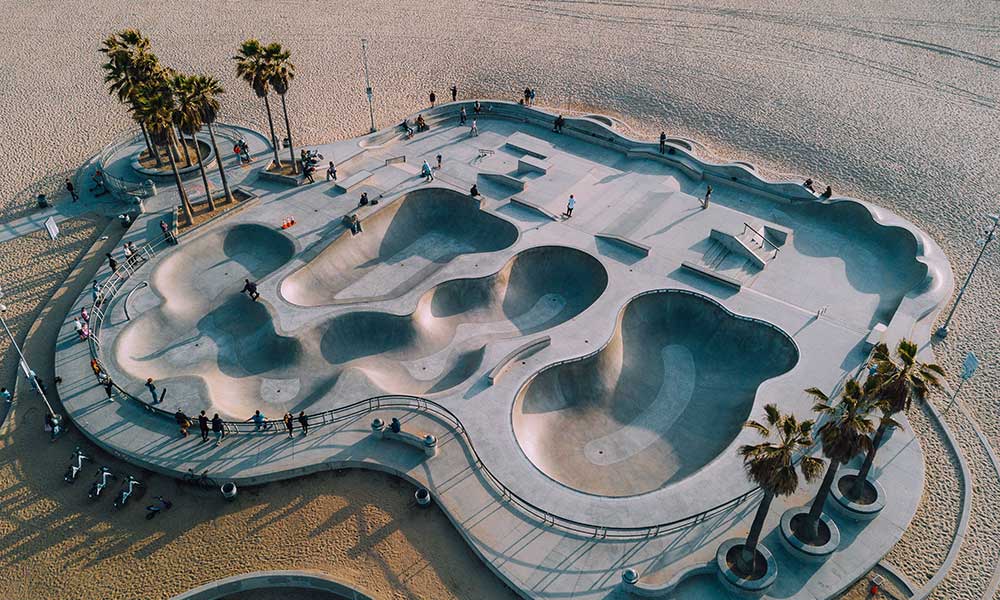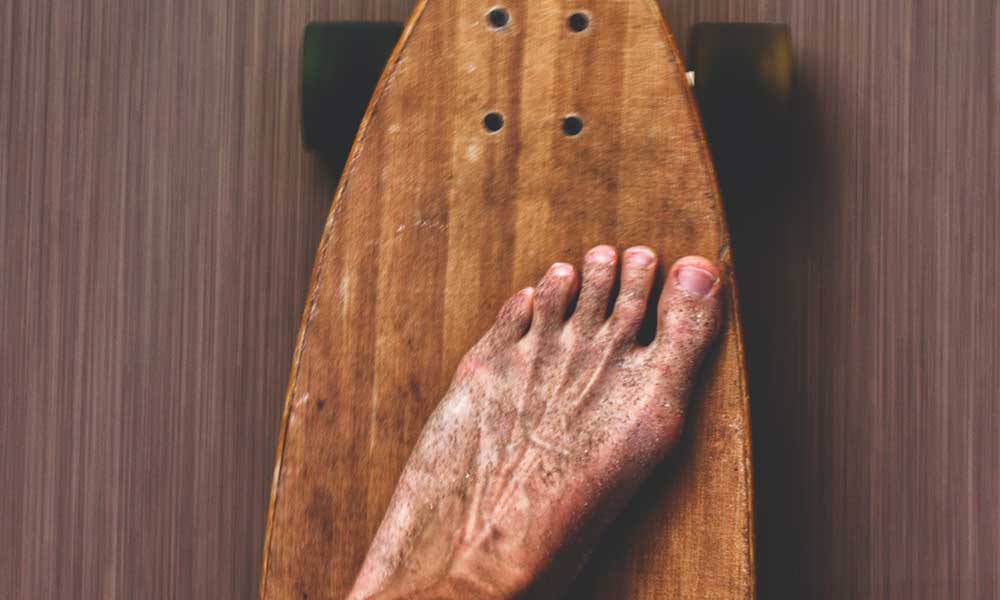A skateboarding style refers to the way that someone rides their skateboard.
In the broadest sense, the two styles are performing tricks and cruising.
But once you get into the specifics, there are actually many other skateboarding styles and it’s those styles that we’ll look at here.
Not sure which skateboard style is right for you or which bracket you currently fall into? Keep reading to find out.
Street Skateboarding
Street skating uses common obstacles like boxes, rails, and curbs to perform tricks.
Street skateboarders typically opt for narrower decks and smaller wheels, allowing them to flip tricks freely as they transition from obstacle to obstacle.
Street skaters often have their favorite “spots” in cities and towns.
They will use random obstacles like handrails, stairs, bins, park benches, and anything else that gets in the way and can be jumped, grabbed, and flipped.
By incorporating all of these obstacles into a single run, they create something that is known as a “line”, a skateboarding term used in reference to other trick-based skateboarding styles.
Vert Skateboarding
Vert skateboarding is all about air and tricks.
Skateboarders move from the horizontal to the vertical (which is where the “vert” comes from) with the use of vert pipes and pools.
The big air gained by these steep inclines allows skaters to generate lots of speed and verticality, at which point they can perform tricks like spins and flicks.
Freestyle Skateboarding
Freestyle skateboarding developed in the 1960s, making it one of the oldest skateboard styles.
It’s often performed along with music and with complex choreography, turning this sport into a dance.
Once skateboarding tricks were developed, freestyle skateboarding was no longer the only way or the best way to use a skateboard.
But it’s still a common style.
Park Skateboarding
Park skateboarding takes place in skate parks, with riders using quarter pipes, half pipes, kickers, and rails to flip, grab, spin, and grind.
It’s one of the most common skateboarding styles and the one that most people think about when they picture skateboarding.
Skateparks are also used to practice other extreme sports and it’s normal to see everything from BMX bikes and scooters to inline skates at your local skatepark.
Cruising
The whole point of cruising is to gain speed and keep moving.
It’s not about tricks—it’s all about speed and enjoying the road.
Cruising is often a means of transportation, with skaters using longer boards and bigger wheels to cruise to work, school, or just around their local skate park.
After all, skateboards are cheap and eco-friendly, making them the perfect travel option for skaters who don’t want to drive everywhere and still want to enjoy the journey.
Downhill Skateboarding
As the name suggests, downhill skateboarding is all about reaching high speeds while racing downhill.
It involves the use of longer boards that are more comfortable to ride and provide greater stability when those high speeds are reached.
Downhill skateboarding, like freestyle skateboarding, has been around for a long time.
It was actually depicted in some of the earliest known skateboarding films and was popular due to the high speeds that could be reached and the relatively limited technical skill that was required.
Summary: Skateboarding Styles
In the early days of skateboarding, there were very few purpose-built parks for skateboarders to practice their skills, which is why they were often forced onto the streets or into backyard pools.
These days, you can find skate parks in all major cities and towns, and it’s a sport that you’ll also see showcased in major events and competitions.
The freedom that skaters have, along with the many features implemented by manufacturers, has helped all skateboarding styles to flourish and ensures that this sport is one of the most varied in the world of extreme sports.

